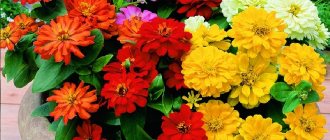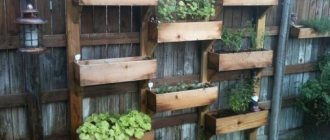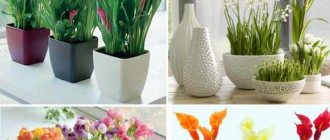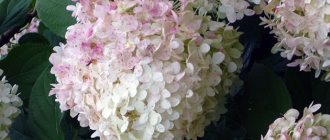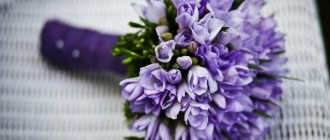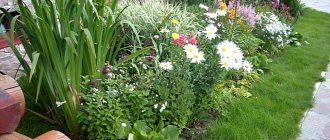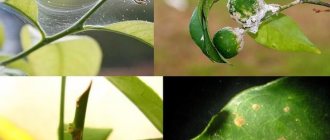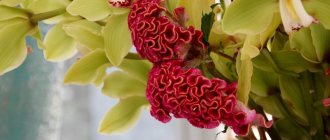For many flower growers, their love for this culture began in childhood with large velvet bells stolen from their grandmother’s windowsill. In those days, it was almost impossible to find gloxinia other than deep purple or crimson in color. Today, breeders have obtained hundreds of plants of amazing beauty, variety of shapes and colors, ready to grow and bloom magnificently in indoor conditions.
It’s unlikely that our grandmothers suspected that studying photos and names of gloxinia varieties could take more than one hour. The collections of current fans of this flower include:
- white and pink, purple and red varieties;
- varieties with polka dot flowers;
- plants with bells, decorated along the edge with a bright contrasting border.
To simplify classification, flower growers have introduced a division of gloxinias according to the size of the bush and the characteristics of the corollas.
Classification of Gloxinia varieties
Depending on the size of the aboveground part of the plant and the rosette formed, hybrid gloxinias are divided into miniatures, which do not grow more than 20 cm, and standard plants, the diameter of the leaf rosette of which can exceed 30 cm. There are also a number of varieties that occupy an intermediate position in this classification.
The corollas of modern plants may consist of one or several rows of petals. Terry gloxinias are incredibly popular, because their bell-shaped flowers are more magnificent than simple ones, and their shape most closely resembles a camellia or a garden rose.
Based on the type of color, modern varieties of gloxinia are divided into plain, calico and tiger.
- Solid flowers are evenly colored in different tones from white, light pink or purple to purple and deep violet. Only the spot deep in the neck may be lighter or white.
- Corollas with a calico type of color are covered with uniform spots or speckles.
- Tigers are decorated not only with elegant polka dots, but also with a border around the edge of the petals.
Having seen the inscription gloxinia “Tigrina Red”, Blue or White on the package with the tuber, you can be sure that the manufacturer offers to grow a flower with an original corolla of a rich red or purple hue. However, it will not be possible to obtain the same plant from seeds, because hybrids reproduce only vegetatively.
In some varieties of gloxinia, the flowers have the shape not of the usual bell, but of a thydea, that is, a shoe, more often found in other plants belonging to the Gesneriaceae.
Gloxinias love bright, but not direct rays of the sun, are afraid of drafts and sudden temperature changes, and respond very negatively to excessive watering. It may seem that gloxinia is very capricious. But those who master plant care will not regret it. With due attention, the green pet blooms regularly from spring to autumn.
By autumn, the number of buds decreases, and then the aboveground part of the gloxinia fades. The plant begins a dormant period, during which life is preserved only in the tuber.
At home, a gloxinia plant can be obtained from a tuber planted in the spring or from seeds. You can propagate your favorite variety by rooting a healthy leaf. Thanks to this, many cultivated varieties are now more accessible than before.
Both foreign and Russian enthusiasts are engaged in the selection of gloxinia. The industrial varieties offered to amateur flower growers by large flower growing companies in Holland and other countries are widely known. Their assortment includes simple and double gloxinias, conventionally grouped according to the shape of the flowers, the size of the corollas and rosettes.
How to plant gloxinia and proper care of the flower after planting
To the question of how to properly plant a gloxinia flower, the answer is this: you need to start by laying drainage at the bottom of the pot (which, by the way, must have holes). This layer is designed to provide the plant with protection from stagnation of liquid during watering and to create a barrier against the development of rot. To create a drainage system the following are suitable:
- Pebbles.
- Expanded clay.
- Clay shards.
Substrate: flower soil mixture. You can use a ready-made substrate intended for planting violets. If you want to prepare the soil mixture with your own hands, then you need to combine:
- One part of sheet soil.
- Two parts of turf soil.
- One part of river sand.
- Two parts of peat.
- One part of leaf humus.
The gloxinia tuber needs to be buried only 2/3 of its length into the substrate. Its upper part should not be covered with earth, as there is a risk of water droplets getting on the sprouts, which could result in rotting.
After planting, gloxinia flowers require certain care: the tuber must be covered with film and the pot placed in a place with plenty of sunlight. It is necessary to ventilate the mini-greenhouse twice a day – for half an hour each time.
As soon as the first two leaves appear, it can be disassembled, and then add as much soil mixture to the pot as necessary to completely cover the tuber.
Group of varieties of gloxinia Avante, Avanti
A good example is Gloxinia Avante or Avanti. This group of varieties includes many color options. Most often, gloxinias of this variety are offered in the form of seed sets for self-cultivation. Mature plants have a compact leaf rosette, against which simple velvety flowers seem even larger and more impressive.
The most common Avanti hybrids include gloxinia:
- Avanti Light Violet;
- profusely blooming white, with wavy edges Avanti White;
- with light lilac or bluish flowers, decorated with a wide white wavy border Avanti Blue with White Edge, or Blue lace;
- Scarlet, with velvety wine-red Avanti Scarlet flowers.
Transfer
The indoor gloxinia flower requires replanting every year when the dormant period begins. We need to prepare a new pot. The soil used for transplanting violets and begonias is suitable. Ready-made soil can be purchased at a flower shop. If desired, prepare the soil mixture yourself. To do this, you will need to mix one part of humus and sand with two parts of leaf soil.
It is best to transplant in January or February. The plant is removed from the old pot along with a lump of earth at the roots. It needs to be transferred to a new prepared container. The container should be only slightly larger than the original pot.
A high-quality drainage layer is created at the bottom. A thin layer of prepared soil is poured onto it. Next, the plant is installed in the pot. Its roots are sprinkled with substrate, slightly compacting the soil. They should only be half immersed in the ground. The same principle applies to the initial planting of a flower.
Gloxinia Yesenia
One of the terry Dutch hybrids, widely cultivated all over the world, is called Yesenia. A medium or large plant up to 30 cm high forms a rosette of green leaves with short petioles, above which spectacular double flowers rise. The half-opened corollas resemble pink buds, but when a crimson or crimson flower on a short peduncle opens completely, a white or pinkish border appears along the edge of the petals. The hybrid Gloxinia Yesenia, as in the photo, is characterized by long bouquet flowering.
Reproduction
You can get young plants in several ways:
- Leaf cuttings,
- Stem cuttings,
- By dividing the tuber,
- Seeds.
Read more about each of them.
Leaf cuttings
Propagation material is harvested during budding or at the beginning of gloxinia flowering. The lower plate with a short and thick stalk is separated from the leaf rosette. The size of the future tuber depends on its diameter.
Young leaves are not suitable for propagation of gloxinia.
Anna Didkovskaya, “Charming Gloxinia.” Journal Neskuchny Sad, No. 1-2(18) 2008.
Cuttings are carried out as follows:
| Step 1 | Step 2 | Step 3 | Step 4 |
| Immerse the cut stalk in water with the lower part of the petiole by 1-1.5 cm | Keep until roots appear. In this case, the water cannot be changed; it must be added as it evaporates. | The sprouted cutting is sprinkled with rooting powder or dipped in gel. | Planted in a substrate for gloxinia, after adding baking powder to it. It should be 2 times more than for adult plants. |
Stem cuttings
This method is used if several stems have sprouted from one tuber. One of them is cut off, germinated in water and planted as leaf cuttings.
Tuber division
In order to get young plants from rhizomes, you need to wait for new shoots to appear. Moreover, there should be at least two of them.
The division procedure is carried out as follows
A sharp knife is disinfected with alcohol or chlorhexidine
This is necessary in order to prevent possible infection. The tuber is cut into pieces so that one sprout remains on each section. The cut is slightly dried and sprinkled with crushed activated carbon and or ground cinnamon. The nodule divisions are carefully planted in a separate pot with fresh substrate for flowering indoor plants. There is no need to deepen the rhizome; it is barely sprinkled with soil and watered carefully.
Despite all the measures taken in advance, cut tubers often rot and do not germinate. Therefore, this method of reproduction is considered the most unsuccessful.
Seeds
Gloxinia seeds can be purchased at many flower shops. Some gardeners successfully obtain them themselves. This requires artificial pollination.
It is carried out like this:
As soon as the bud opens completely, you need to take a soft brush with natural bristles and move the pollen from the stamens to the stigma. To consolidate the result, repeat this procedure again the next day.
If pollination occurs successfully, the perianth falls off after a few days and the ovary begins to grow with seed primordia. They ripen in one and a half to two months. Their size is miniature; such seeds are called dust-like. To collect them, you need to place a piece of paper under the box and lightly tap them out onto the paper.
Gloxinia seeds are sown in seed boxes or plastic boxes filled with a mixture of peat and sand. They try to distribute small grains evenly over the surface of the moistened substrate. There is no need to sprinkle them; it is better to lightly press them into the soil and cover with plastic wrap.
After 14 days, the first shoots will appear. When the seedlings reach the size of two true leaves, they need to be pruned. Each plant is planted in a separate pot, the size of a disposable plastic cup or peat tablet.
After complete survival, after about a month and a half, the young plant with a lump (or together with a peat tablet) is planted in an “adult” gloxinia pot.
There are already 18 varieties of gloxinia in my home collection. Many of them reproduce well. At first I gave away young plants. Now I'm selling it to the store.
Gloxinia Hollywood
The purple flowers of Gloxinia Hollywood seem to be cut out of thin velvet. The petals of a simple flower can be darker or lighter. At the same time, the deep neck always has a light lemon tint and is decorated with contrasting purple dots. The hybrid is characterized by lush mass flowering, a small rosette of green leaves and high decorative value.
Among the mass of options, the most striking and memorable is the so-called Black Hollywood with very dark, almost black flowers without a light core.
Care during the rest period
The home flower gloxinia requires special care during the dormant period. It is worth considering that during this period the above-ground part of the plant completely dies off. Therefore, it is necessary to provide appropriate conditions for the roots so that in the spring the flower begins to develop and becomes as beautiful as before.
When the upper part of the gloxinia begins to die, the amount of watering is reduced. No feeding is needed during this period. When the stems are completely dry, they are carefully cut off. Only short cuttings are left above the surface. Now watering is not required at all. The pot with gloxinia roots is transferred to a cool, dark place. If there is no such room in the apartment, you can put a flowerpot under the bathroom.
The gloxinia flower requires watering once a month during the dormant period. However, do not over-water the soil. It is enough to moisten the soil a little. This way the root will not be able to dry out. In January it will be possible to transplant it into a more nutritious substrate.
Sometimes in winter, gloxinia produces a small sprout. This happens if the room temperature is relatively high. For a strong root this is not a problem. The sprout must be removed, otherwise in the future it will stretch out and take away the flower’s strength.
Gloxinia Blanche de Meru
The Gloxinia Blanche de Meru shown in the photo is easily recognizable by its large flowers with crimson petals and a white throat. The leaf rosette of the plant reaches 25 cm in diameter, and good care helps to maintain not only velvety large leaves, but also stimulates long-term, lush flowering from late spring to early autumn.
If gloxinia is exposed to direct sunlight, both velvety leaves and flowers may suffer. There are fewer of them, the opening buds are paler in color and fade faster.
Pest and disease control
Gloxinia most often suffers from cyclamen and spider mites. These are small pests that are difficult to see - in large numbers they rather resemble a coating or layer of dust. The leaves begin to deform and curl, and the buds wither. To combat parasites, use a solution of insecticides for flowering plants.
Another problem is thrips, which can be detected by the appearance of light spots on the leaves. In this case, in addition to treatment, it is necessary to replace the entire top layer of soil, because this is where the pest lays its larvae.
If brown rot appears on the leaves, the damaged areas should be immediately removed and treated with fungicides. Root rot is more difficult - most often it can be detected when the stem begins to deteriorate. In this case, it is almost impossible to save the flower. Therefore, be sure to monitor watering, do not overwater gloxinia and do not use too cold water.
Photo: pocvetam.ru
Gloxinia Shagane
Gloxinia selection is carried out not only by specialists from large floriculture centers, but also by amateur enthusiasts. In recent years, such proprietary varieties from Russian and foreign breeders have gained incredible popularity.
Today there are thousands of varieties of gloxinia, photos and names of which awaken imagination, and the appearance of the flowers forces flower growers to replenish their collections again and again.
Terry gloxinia with large bell-shaped flowers, light leaves and harmonious peduncles was bred by breeder E. Slyusar. Gloxinia Shagane is a very beautiful purple tiger. The corollas with a short greenish throat are decorated with a bright violet-blue border. Most of the petals are white and strewn with purple speckles of varying sizes and intensities.
general information
Gloxinia belongs to the large Gesneriaceae family, which includes Chrysothemis, Koleria, Gesneria and Streptocarpus. This is a spectacular tropical perennial that came to us from Central and South America. Most often in its natural environment it is found in Brazilian and Peruvian forests, in the mountains of Mexico and in the Andes.
Gloxinia received its unusual name in honor of the physician and botanist from Alsace, Benjamin Gloxin. The second name is Sinningia, and this is another most important name in the history of floriculture. Wilhelm Sinning is a horticulturist at Boston University who has developed many new varieties and species of flowering plants, including the domestic hybrid Gloxinia.
Photo: 2sotki.ru
Gloxinia Cleopatra
Calico-colored gloxinias are no less spectacular than tigrines or plain flowers. Terry gloxinia Cleopatra immediately stands out from other varieties. It has large double flowers of white color, which are richly decorated with purple and lilac polka dots. The edges of the petals are corrugated, and the speckled pattern on them becomes smaller and lighter. The flower has a pinkish neck, also powdered with crimson and crimson spots and streaks. A strong plant with large leaves thanks to its short peduncles, it is very compact and, with proper care, maintains lush bouquet flowering.
Terry multicolor
Light
Gloxinia charm has delicate milky flowers with a bright pink edge. All over the petal there are pink polka dots of different sizes. Flowers are held on strong medium-sized peduncles. Belongs to a compact group.
Karina variety with huge milky-white flowers on tall peduncles. Lilac-raspberry specks begin at the base of the yellow neck. Rising to the edge of the petal, they form a border of the same color. The leaves are large, lush green. Standard group.
Gloxinia Cleopatra is deservedly popular. Who can calmly pass by a profusely blooming indoor plant with white or light pink bells that taper towards the peduncle. On the light background of the petal, peas are scattered, pink along the edge, turning into lines of burgundy and purple towards the core of the flower. Blooms all summer. Flower size and fullness increase if fertilized in moderation. The bush belongs to the compact group.
Gloxinia sudarushka is white with reddish or pink polka dots forming an unusual pattern. The edges of the tubular petals have a clear border, as if someone had worked with a pencil.
Flower growers fell in love with Gloxinia Dolce Vita for its large (up to 10 cm) flowers sitting on thick peduncles. When they bloom, it seems that a pearly pink cap has been thrown over the lush green leaves. Group – standard.
Sharon stone - stands out with large delicate milky-white flowers, along the edge there is damask of an intense pink shade. It is quite wide, as if you took a felt-tip pen and drew a line. Sharon's throat is yellowish. The leaves of the charming Gloxinia Sharon Stone are juicy green, slightly elongated. The group is standard.
The Shalunya hybrid is a compact gloxinia. The petals are white with a pink border (sometimes without it) and a beige neck. When the flower blooms, it seems that a white rose has bloomed on a long peduncle. There is only one bad thing: the “rose” does not always open to the end.
In the Gloxinia hybrid variety Shagane, the blossoming flower resembles a rose. On the white petals, along the edge there is a blue border two centimeters wide. There are purple and violet specks and peas all over the field. The peduncle is stable and low. The bush belongs to the compact group.
Gloxinia zaznoba is a compact bush with round white flowers. The narrow border is light purple, the polka dots are purple and purple. Blooming flowers are collected into a neat bouquet due to short peduncles. The neck is yellowish. The leaves are juicy green, elongated.
Gloxinia with the English name Georgia has an open flower, with crimson-colored speckles along the white field of petals. The edge is bordered by a narrow lilac stripe. The bells are large, wavy, with pronounced corrugation. If the plant is grown in favorable conditions, the peduncle turns out to be stable and thick. The bush belongs to the standard group.
Gloxinia quadrille is a standard group, distinguished by large light roses up to 10 cm in diameter with red peas. They increase in size closer to the neck. On the neck, in addition to small specks, stripes are clearly visible. Petals are corrugated. The leaves are dark green, the underside is slightly reddish. Peduncles up to 10 cm.
Gloxinia Winter Cherry
Unfortunately, the author of this magnificent variety is unknown, but this does not detract from the merits of the plant with bright double flowers of original color. Gloxinia Winter Cherry is a semi-miniature plant, so its corollas are small, but unforgettable. White bells are densely strewn with large cherry spots. The calico color of the flowers becomes somewhat lighter towards the wavy edges. The shape of gloxinia bells is very similar to fantasy roses. The variety is characterized by small green foliage with a fleecy surface.
